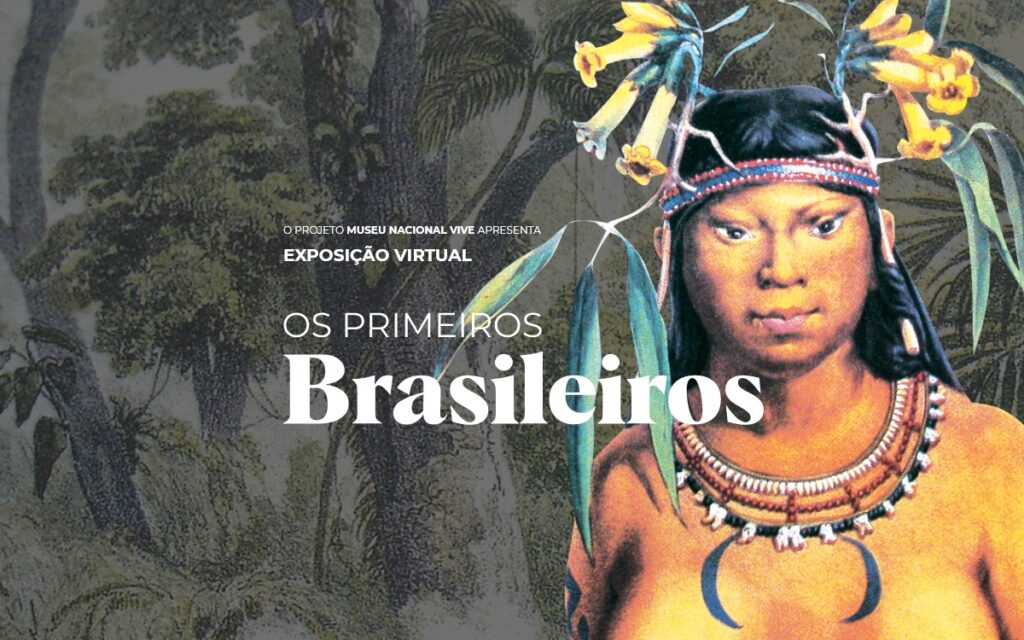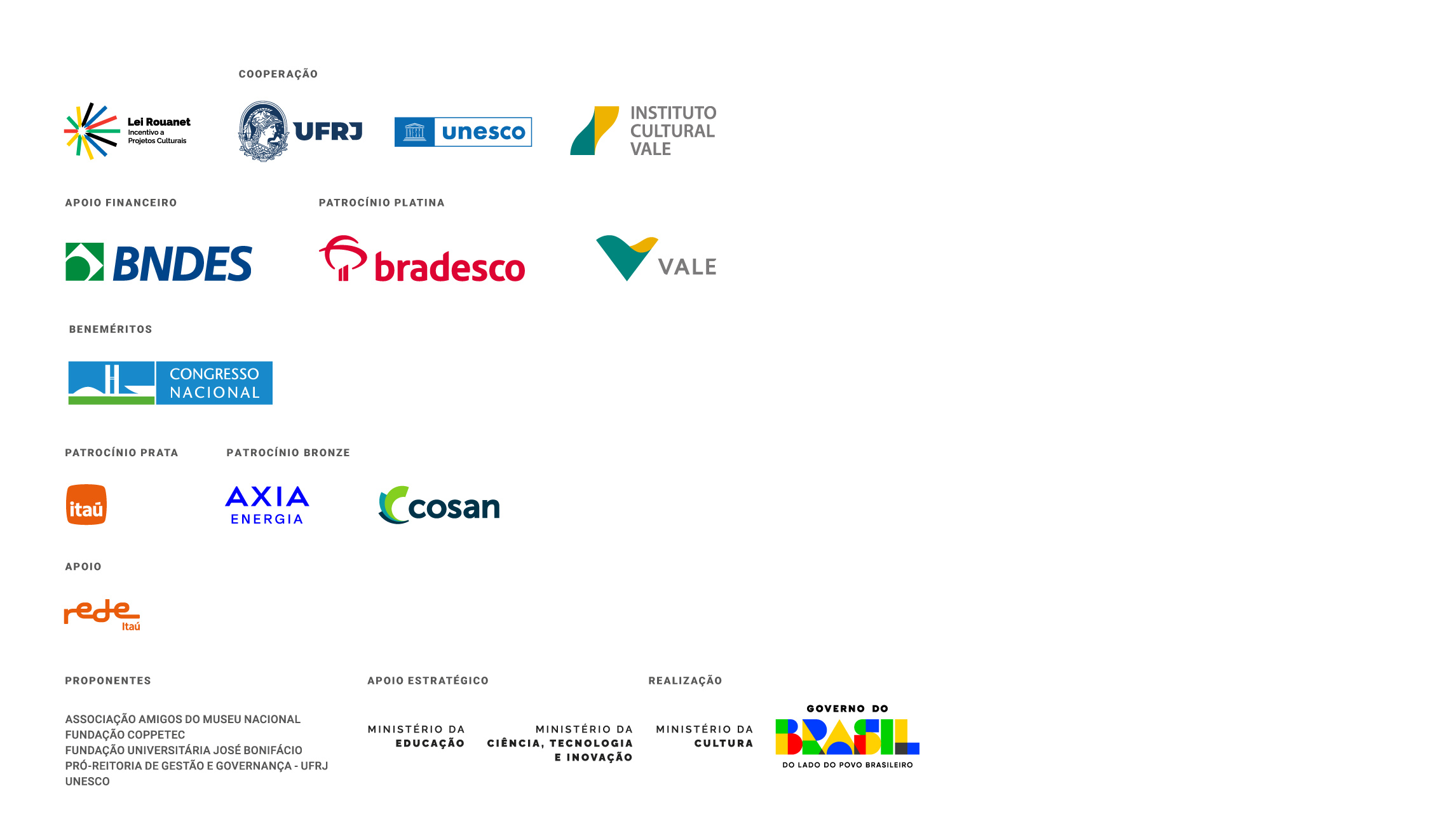VISIT THE EXHIBITION “OS PRIMEIROS BRASILEIROS”
Virtual exhibition with the indigenous collection of the Museu Nacional/UFRJ that was not reached by the fire was held with the encouragement of the Museu Nacional Vive Project.

Historical panels, music, films and photographs that record the diversity and narratives of indigenous peoples make up the exhibition “Os Primeiros Brasileiros” [The First Brazilians]. Conceived by anthropologist João Pacheco de Oliveira (National Museum/UFRJ) in close partnership with the Articulation of Indigenous Peoples and Organizations of the Northeast region and states of Minas Gerais and Espírito Santo (APOINME), the exhibition has already been appreciated by more than 250,000 people, and now has the virtual edition.
In 2018, at the time of the fire at the National Museum, the collection was at the Memorial of Indigenous Peoples, in Brasília. The last physical version of the exhibition occupied the National Archives (RJ) in 2019, and had to be closed to the public in March of last year, in the context of fighting the COVID-19 pandemic. This virtual edition, encouraged by the Museu Nacional Vive Project (technical cooperation between UFRJ, UNESCO and Vale Cultural Institute), takes place in the midst of efforts to rebuild the Museum and invites society as a whole to keep in touch with this important collection.
According to João Pacheco, “the exhibition, by considering the Northeast indigenous peoples, represents a dip into Brazil’s history, recovers the exuberance of these populations at the beginning of colonization, reveals the forms of domination to which they were submitted, and shows the strength and the vitality of its cultural production. Finally, it points out the leading role of these peoples and communities in contemporaneity, putting into practice a new form of citizenship, which collaborates to the construction of a project for a multi-ethnic and multicultural nation.”
To awaken new emotions and perspectives on indigenous peoples, the exhibition proposes an immersion in images, texts and soundtracks, presented in four moments: the first encounter, the colonization trap, the indigenous world and contemporary forms of citizenship.
Around 180 images of historical and contemporary materials, 12 soundtracks and five films compound the environments. Photographs and descriptions of artifacts that were not reached by the fire, such as a Tupinambá mantle, ritual masks, traps, musical objects and weapons illustrate the richness of the collection. One of the differential aspects of this edition is the largest space dedicated to indigenous narratives and representations of our time, either by means of video testimonials or galleries with images of different peoples.
Focusing on the Museum’s educational potential, a “Didactic Guide for Educators”,was developed, with theoretical references and suggestions for practical activities for pedagogical coordinators and teachers, which could be developed in physical or digital classrooms. Access is open and free.
“This virtual exhibition is yet another example of the National Museum’s resilience, which, despite all the adversities, manages to present a high-quality product to the public. By making this virtual, multimedia and free exhibition available, with support to educators, we are expanding access to the educational, scientific and cultural mission of our museum of natural history and anthropology, crossing the borders of Rio de Janeiro,” highlights the Director of the National Museum/UFRJ, Alexander Kellner. And he completes: “All this thanks to the dedication of our different specialists and essential partners, supporting and working together with the curator and his team, seeking to stimulate important reflections in classes, based on this enchanting experience about traditional and scientific knowledge”.
Visit the exhibition “Os Primeiros Brasileiros”! At the end of the experience, take the opportunity to evaluate, suggest new themes and collaborate to future exhibitions of the Museu Nacional/UFRJ.
ABOUT THE VIVE NATIONAL MUSEUM PROJECT
In response to the enormous challenge of rebuilding the National Museum, the Federal University of Rio de Janeiro (UFRJ), the United Nations Educational, Scientific and Cultural Organization (UNESCO) and the Vale Cultural Institute signed a technical cooperation agreement to implement the Museu Nacional Vive Project, which currently has platinum sponsorship from BNDES, Bradesco and Vale; support from the Ministry of Education (MEC), Federal Bank of Rio de Janeiro, Legislative Assembly of the State of Rio de Janeiro (Alerj) and the Federal Government, through the Culture Incentive Law.




